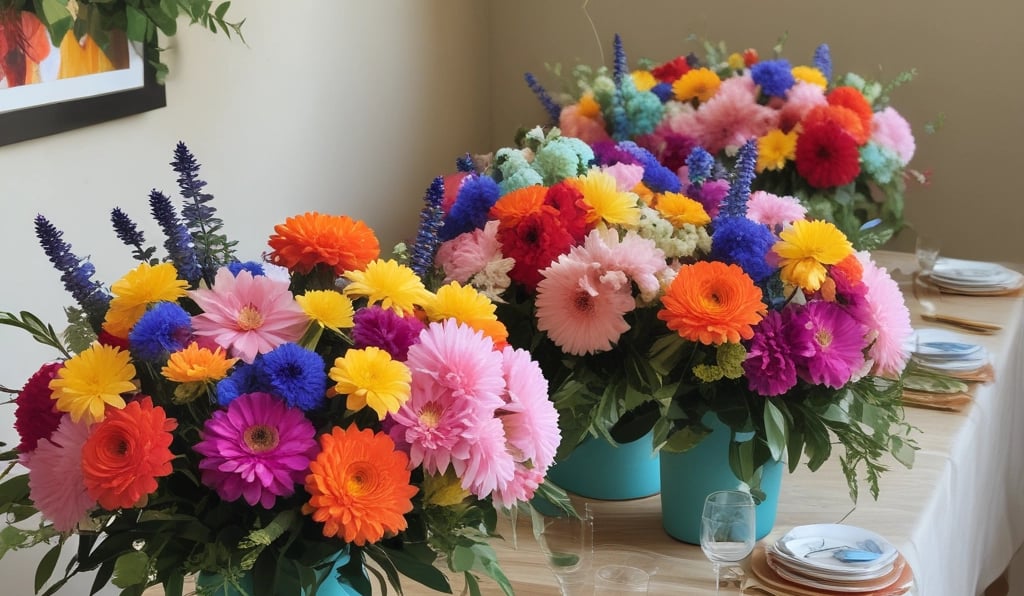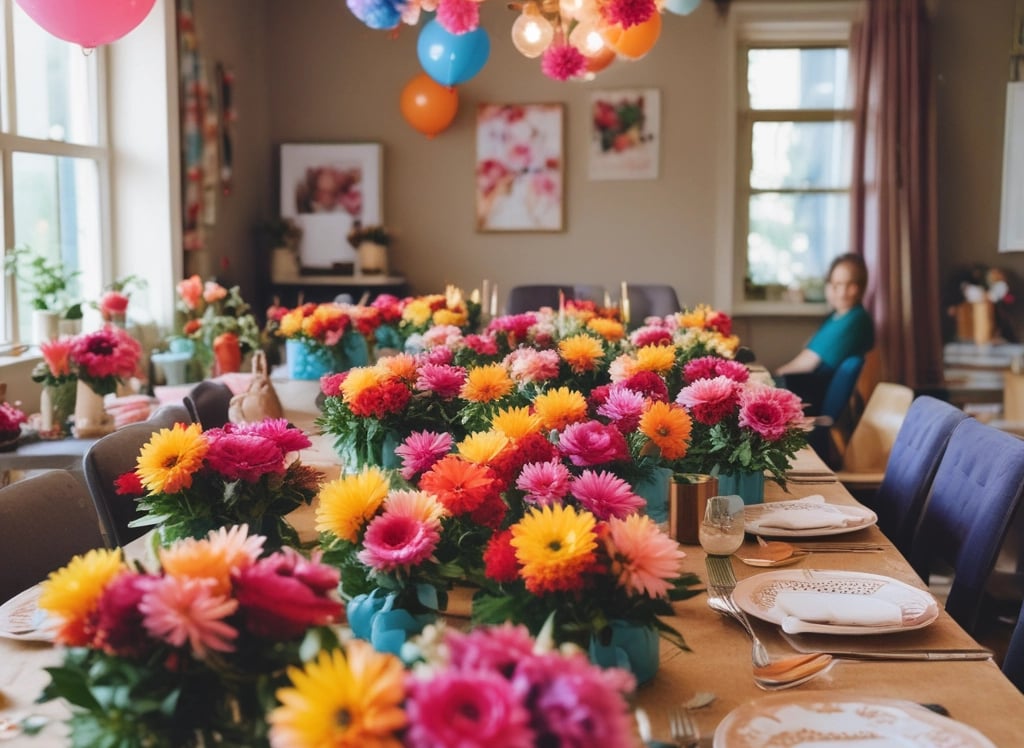Birth Month Flowers Ultimate Guide
Have you ever wondered why that special bouquet felt so… personal? It’s not just about the color or the scent. Believe it or not, flowers have been talking to us for centuries! Long before emojis and text messages, people used the language of flowers, also known as floriography, to express feelings and send secret messages. This charming tradition goes all the way back to ancient Roman times and gained serious traction in the Victorian era. It's truly a beautiful way to mark a special occasion.
Let's be real, a birthday isn't just another day, right? It's a chance to celebrate the unique person you are. And what better way to do that than with your very own birth month flower? Just like a birthstone or a zodiac sign, these blooms are said to embody the personality traits and special meanings of those born in each month. Let’s unravel the rich symbolism of flowers and uncover the perfect bloom for you or someone you love.


Birth Month Flowers: Why So Many Flowers?
Before we get to the fun part of finding your flower, you might be asking yourself, "Wait, why are there two birth flowers for most months?" That’s a fantastic question, honestly. It boils down to a few things. First, different cultures and regions have their own traditions. What was a birth flower in one part of the world might not have been in another. Plus, some flowers just aren't available year-round or in every climate. To give people options, the birth flower guide evolved to include a primary and a secondary flower. Here’s a little secret: a lot of these flowers have fascinating stories and legends tied to their history, adding even more intrigue to their meanings.
Your Journey Through the Floral Calendar
Let's take a stroll through the calendar and discover what each month's bloom has to say.
January: A Tale of Two Tough Cookies
For those born in the depths of winter, your flowers are the hardy Carnation and the delicate Snowdrop. These aren't just pretty faces. The Carnation, with its ruffled petals, is a classic symbol of love, distinction, and fascination. A red one means deep admiration, while a white one represents purity and good luck. The Snowdrop, on the other hand, is a little winter warrior. It often pokes its head up through the snow, symbolizing hope, rebirth, and the promise of new beginnings. Giving a January baby these flowers is like saying, "You're a beacon of light and strength, even on the coldest days."
February: More Than Just a Rose
While roses steal the Valentine's Day spotlight, February babies have a much more meaningful bloom: the Violet. This modest little flower represents faithfulness, humility, and spiritual wisdom. Violets were even used in ancient love potions. Talk about an intriguing backstory! The secondary flower, the Primrose, symbolizes young love and optimism.
March: A Burst of Sunshine
It's no surprise that the Daffodil is the official March birth flower. This cheerful yellow bloom is a harbinger of spring, representing new beginnings, happiness, and rebirth. Seeing a field of daffodils after a long winter can be an emotional experience. The Jonquil, a type of daffodil, carries the same meaning but also adds a layer of strong affection and a desire for affection to be returned.
April: Simple and Sweet
April's flowers are the sweet and simple Daisy and the fragrant Sweet Pea. Daisies are a classic symbol of innocence, purity, and loyal love. Honestly, who hasn't pulled petals off a daisy saying "he loves me, he loves me not"? The Sweet Pea symbolizes blissful pleasure and gratitude, making it the perfect choice for showing thanks.
May: The Return of Happiness
There's something truly magical about May, and its flowers capture that perfectly. The enchanting Lily of the Valley symbolizes sweetness, humility, and the return of happiness. It's no wonder royal brides have used this flower for centuries. The Hawthorn, a second May bloom, represents hope, happiness, and faith.
June: The Queen of Flowers
June babies get the one and only Rose. A classic for a reason! Roses come in countless colors, each with its own specific meaning, from passionate red to sunny yellow, which represents friendship. The Rose’s meaning goes beyond just a bouquet, it's a timeless symbol of love, beauty, and devotion. The secondary flower, the Honeysuckle, with its sweet, climbing vines, represents the bonds of enduring connections and pure happiness.
July: A Splash of Color
July’s flowers are the vibrant Larkspur and the serene Water Lily. The Larkspur is all about an open heart, lightness, and positivity. The Water Lily, on the other hand, represents purity, rebirth, and finding peace and balance, often seen emerging from murky water to bloom beautifully on the surface.
August: Standing Tall and Strong
If you're an August baby, your flowers are the stately Gladiolus and the whimsical Poppy. The Gladiolus, with its tall, sword-like stalks, symbolizes strength of character, moral integrity, and sincerity. It’s fitting, really, for the bold personalities of August. The Poppy, especially the red one, symbolizes remembrance, peace, and imagination.
September: Love and Wisdom
September’s flowers are the starry Aster and the fleeting Morning Glory. The Aster is named after the Greek word for "star" and represents love, wisdom, and faith. The Morning Glory, which opens with the sunrise and closes by afternoon, is a symbol of affection and the beautiful, but short, nature of life.
October: Fiery and Creative
October’s blooms, the Marigold and the Cosmos, are as vibrant as the month itself. The Marigold, with its golden hues, represents warmth, creativity, and the passionate spirit of those born in October. The Cosmos, on the other hand, symbolizes harmony and order.
November: The Lasting Bloom
The Chrysanthemum, or "Mum," is the sole November birth flower. These long-lasting and vibrant flowers are perfect for fall, symbolizing loyalty, joy, and honesty. It’s a flower that just keeps on giving, honestly.
December: Festive and Resilient
December has two very different blooms: the festive Holly and the Narcissus. Holly, with its bright red berries and green leaves, is a classic symbol of protection and domestic happiness. The Narcissus, often the paperwhite variety, symbolizes hope, fresh starts, and good wishes, making it a fitting flower for the end of the year and the beginning of a new one.
Birth Month Flowers: FAQS
What does "floriography" mean?
Floriography is the term for the symbolic language of flowers, which was particularly popular in the Victorian era. People used specific flowers and arrangements to send coded messages and express feelings that were difficult to say out loud.
Why do some months have more than one birth flower?
The tradition of birth month flowers has evolved over time and across different cultures. As a result, certain months came to be associated with multiple flowers, often to represent different facets of a personality or to offer a choice for people in different regions where certain blooms might not be available at the right time of year.
How can I use a person's birth flower for a gift?
You've got tons of options! You can get a simple bouquet featuring just that flower, or you could ask a florist to design a more complex arrangement that includes it. For a more lasting gift, you could get a piece of jewelry with the flower's image, a print or painting of it, or even a living plant to grow in their garden.
Is the tradition of birth flowers based on science?
Not at all. This tradition is based on folklore, mythology, and historical symbolism. It's a fun and meaningful way to connect with nature and the past, but it doesn't have any scientific basis.
Do all flowers have a meaning?
Yes, in the world of floriography, almost every flower and plant has a specific meaning or association. Some of the most well-known are red roses for love and white lilies for purity, but the meanings can get very specific, from a single bloom to the way a flower is presented.


The Takeaway on Birth Day Flowers
There you have it—a peek into the wonderful world of birth month flowers. Whether you're a passionate Poppy or a humble Lily of the Valley, there's a bloom that speaks to you. Next time you're looking for a gift, remember this: a bouquet of someone's birth flower is more than just a pretty arrangement. It's a deeply personal message that says, "I see you, and I celebrate the amazing person you are."
Elegance
Global blooms delivered with care and style.
Sustainability
Support
Open Mon-Fri (exec Public Holidays)
We reply to emails quickly
© 2024. All rights reserved.
